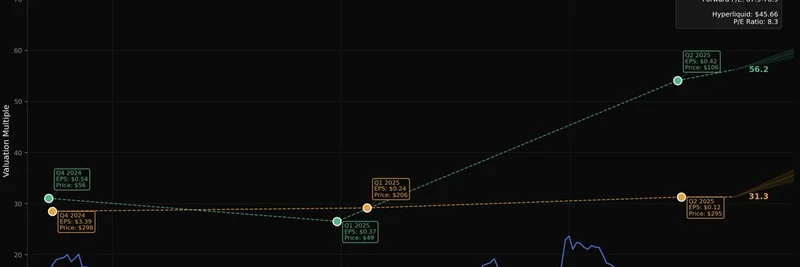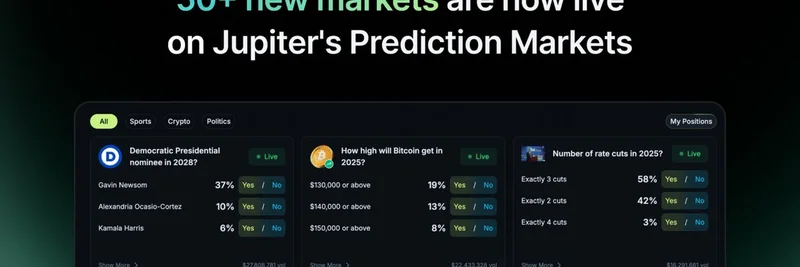In the fast-paced world of crypto, spotting undervalued gems can make all the difference. A recent tweet from analyst Shaun Da Devens at Blockworks Research has sparked buzz in the community, highlighting how Hyperliquid's native token, $HYPE, might be one such opportunity. As of mid-August 2025, $HYPE is hovering around $50, trading at a mere 8.3x price-to-earnings (P/E) ratio. For context, that's significantly lower than Coinbase at 31x and Robinhood at 56x, even though Hyperliquid processed a whopping $319 billion in trading volume in July—surpassing Robinhood's $209 billion.
Understanding the Valuation Gap
First off, let's break down what P/E ratio means—it's a simple metric that shows how much investors are willing to pay per dollar of earnings. A lower P/E often signals that a stock (or in this case, a token) is undervalued relative to its profits. Hyperliquid, a decentralized perpetual futures exchange built on its own Layer-1 blockchain, is delivering centralized exchange-like performance without the centralization risks. Its on-chain order books ensure transparency and speed, making it a favorite among traders.
The chart shared in the tweet projects forward P/E ratios, showing Hyperliquid's trajectory potentially climbing but still lagging behind its peers. Coinbase (COIN) and Robinhood (HOOD) are established fintech players, but Hyperliquid's volume growth tells a different story. In July 2025 alone, it handled more trades than Robinhood, yet its valuation doesn't reflect that dominance.
Upcoming Catalysts: HIP-3, Builder Codes, HyperEVM, and AF TWAP
Shaun points out that this "dislocation" won't last, thanks to several tailwinds on the horizon. Here's a quick rundown:
HIP-3: This upgrade allows users to create and run their own perpetual markets on Hyperliquid. You can customize everything—from the asset and oracle to leverage settings—opening the door for innovative trading products.
Builder Codes: These enable developers and builders to earn fees on trades they facilitate. By setting codes per order, it incentivizes integration and distribution, boosting network effects as more front-ends and apps connect to Hyperliquid.
HyperEVM Tailwinds: HyperEVM is Hyperliquid's EVM-compatible ecosystem, expanding beyond perps into smart contracts and DeFi applications. As the ecosystem grows, it could attract more developers and liquidity, similar to how Ethereum scaled.
AF TWAP: The Assistance Fund (AF) uses a portion of trading fees to buy back $HYPE tokens automatically. It employs Time-Weighted Average Price (TWAP) orders to execute these buys efficiently, reducing market impact and creating steady demand for the token.
These features aren't just hype—they're designed to drive real adoption and revenue. With complete decentralization in focus for 2025, Hyperliquid is positioning itself as the go-to infrastructure for on-chain liquidity.
Why This Matters for Meme Token Enthusiasts
While Hyperliquid isn't a meme token itself, its platform supports trading a wide array of assets, including volatile memecoins via perpetual futures. For blockchain practitioners diving into memes, understanding platforms like Hyperliquid can enhance trading strategies. Lower fees, high leverage (up to 40x), and on-chain transparency make it ideal for catching the next big meme wave without the pitfalls of centralized exchanges.
If you're into crypto valuations, keep an eye on Hyperliquid's official site or dive deeper into their docs. Shaun's analysis suggests $HYPE could see significant upside—perhaps even targets like $100 or $150 floated in the replies.
As always, do your own research, but this tweet shines a light on a potential mismatch in the market that's worth exploring.




